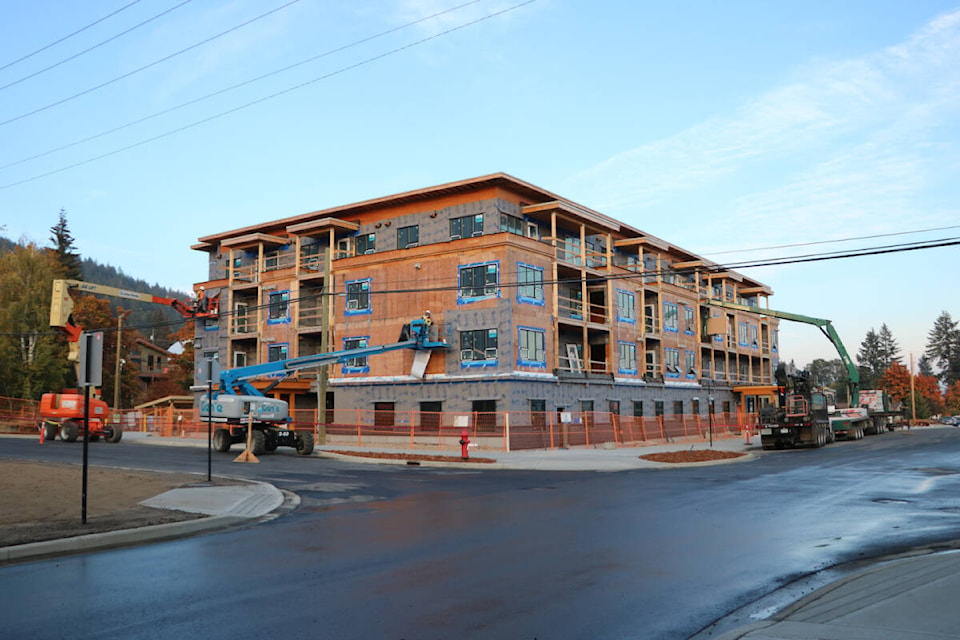Climate change legitimately requires the attention of governments, but the scattershot approach in Ottawa and Victoria is not cost-effective and cannot succeed. Yes, climate programs must resolutely pursue a sustainable environment. But if the measures are not cost-effective, they will not be economically sustainable. Prudence is lacking in both governments.
The GHG-obsessed federal government earlier this year proposed aggressive new building codes to cut residential and commercial building energy consumption by more than half by 2030. The Liberals’ Building Energy Efficiency (BEE) regulations will significantly increase home construction costs across the country. And the reduction in emissions, a September study shows, is minimal.
The Fraser Institute report notes that the BEE measures will have small costs initially, but will “ramp up quickly” raising home construction costs by 8.3% on average by 2030. It gets worse. The cost of complying with the measures by province is highly variable. Author Ross McKittrick says costs will range from a low of $22,144 per home build in New Brunswick to a high of $78,093 in British Columbia.
McKitrick, an economist, argues the BEE regulations are, “ill-conceived and guaranteed to be ineffective.” The report explains, “The economic rationale for an emissions tax is it drives consumers and firms to find the lowest-cost ways of cutting emissions. The options not selected by the private sector are precisely those that are not cost-effective. Introducing new regulations to force people to implement them anyway undermines the market-based process and destroys the potential efficiency of the carbon tax.”
A little context. Canada’s productivity rate has been chronically low – going back to the mid-1990s. Now, it is acutely low. BMO Economics lays it out plainly, “productivity has actually gone into reverse in the past five years….” BMO demonstrates that business productivity growth averaged a decline of 0.3% per year in Canada over that period, while in the United States it averaged a gain of 1.7%. That’s a gap of two full percentage points between Canada and our southern neighbor.
Income growth closely tracks productivity. So, predictably, Canadian real GDP per capita is no higher than it was in 2017. Since 2015, it has diverged from U.S. real GDP per capita, and is now much lower. Canada’s GDP per capita growth during the post-pandemic recovery, the Business Council of B.C. reported, was “the fifth weakest of 38 OECD countries.” Economic growth (GDP growth) in Canada is now totally dependent on population growth.
More climate taxation and regulation, as planned by the Liberals, can only exacerbate our economic woes. The oil and gas industry, for example, already pays the industrial carbon tax. Yet, the federal government is layering on top of the tax the very costly Clean Electricity Regulations, Clean Fuel Regulations, methane regulations and an emissions cap and trade system.
Another example, the transportation and auto industries are impacted by the carbon tax, and will be as well by the Clean Fuel Regulations and Ottawa’s new mandates for electric vehicles (directed at manufacturers). Other industries, too, are targeted with multiple layers of climate taxation and regulation. All of this can only result in the loss of investment, reduced activity in the industries impacted and very possibly, continuing economic stagnation.
The housing and commercial construction industry, too, is already subject to the carbon tax. McKitrick’s study estimates the addition of the BEE regulations will impact national GDP at negative 1.8% by 2030 and GDP per worker at negative 1.7%. In both cases, the impacts will be largest in B.C. and Ontario. Yet, the study reveals the “very costly” measures will decrease national GHG emissions by only 1%.
The NDP government’s CleanBC policy, as well, will inflict substantial costs on the economy. A Business Council of B.C. study earlier this year concluded that, based on provincial government modelling, growth in the B.C. economy this decade will be $28.1 billion lower under CleanBC, which includes a $30 per tonne carbon tax and other measures. “Rather than growing by 20% under the 2017 Reference scenario, B.C.’s economy grows by less than 10% between 2020 and 2030 under CleanBC.”
Governments, federal and provincial, should evaluate climate programs in light of both their costs and the reduction in emissions achieved, and institute only the most cost-cost-effective. The minimally lower emissions provided by the BEE regulations do not justify the extensive costs added to homes and borne throughout the economy. This is especially so given the already advanced housing affordability crisis.
McKitrick calculates, on a per unit basis, the cost of BEE to the economy at $9000 per tonne or about 50 times the nominal carbon-tax value at 2030. BEE does not make sense. The carbon tax does. It allows the private sector to make sound, market-based decisions. And it limits the need for governments’ often arbitrary, inefficient climate regulation.
bruce
Bruce W Uzelman, based in Kelowna, holds interests in economics and political science.


